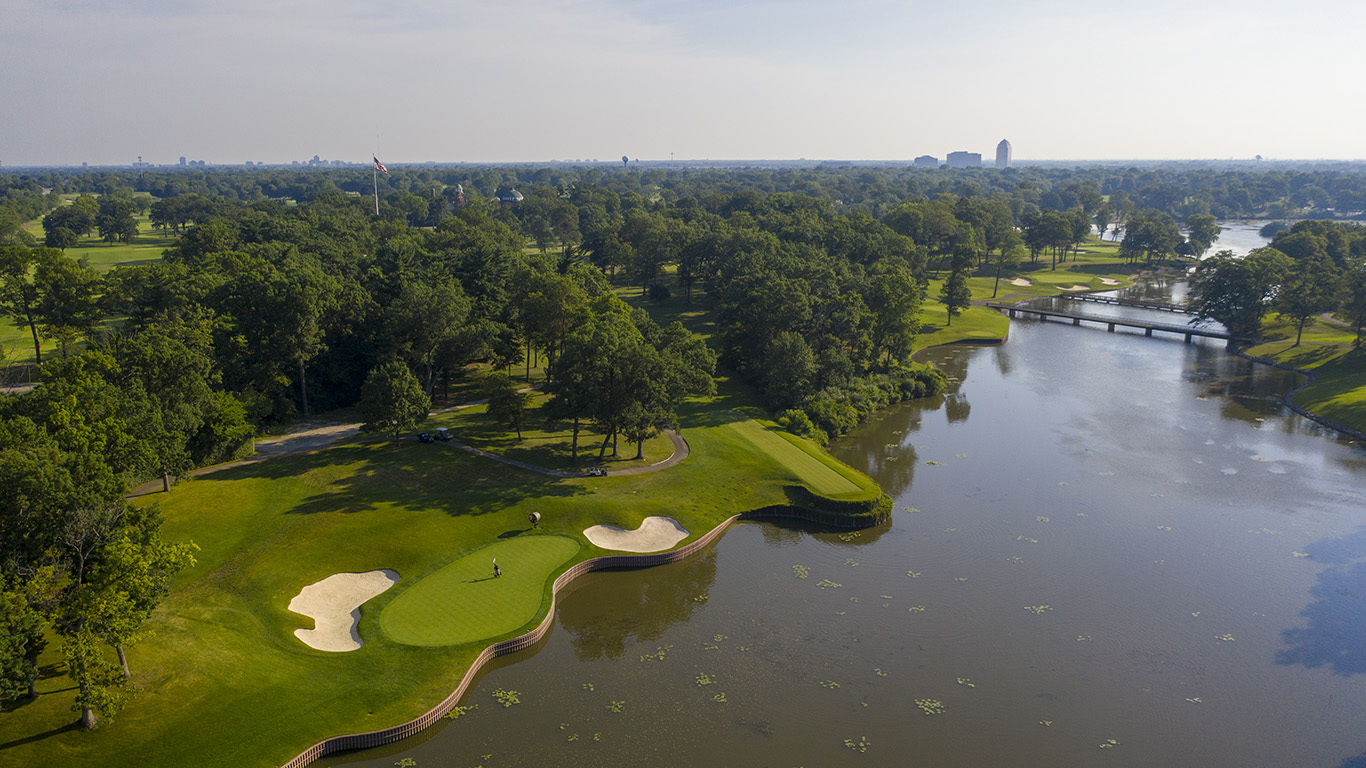Medinah Country Club has hired OCM (Ogilvy, Cocking, and Mead) to create a master plan for a redesign of the club’s famed Course 3. The Australia-based firm—which consists of partners Geoff Ogilvy, Mike Cocking, and Ashley Mead—will propose to reimagine the course and prepare it for future tournaments.
Medinah has long been one of the few golf clubs in the Chicago area capable of hosting major championships. With three 18-hole courses on its property, Medinah has had the space and infrastructure necessary to manage events like the U.S. Open (1949, 1975, 1990), the PGA Championship (1999, 2006), and the Ryder Cup (2012).
“To be working with such a highly regarded club and popular tournament venue is an incredible honor for us,” said Mike Cocking in an interview with The Fried Egg. “Course 3 is laid out over some terrific ground for golf. It’s a beautiful canvas for us to get the chance to work with.”
While relatively new to the U.S. market, OCM has done extensive new construction, redesign, and restoration work in Australia and Asia. Like Coore & Crenshaw, OCM pairs a major champion in Geoff Ogilvy with design-build specialists in Cocking and Ashley Mead. Recently the firm completed a renovation at Peninsula Kingswood Country Golf Club, a 36-hole facility in the Melbourne Sandbelt. In October of this year, OCM premiered its first U.S. project, an overhaul of Shady Oaks Country Club in Fort Worth, Texas.
A history of tinkering
Medinah’s Course 3 has seen a lot of changes since Tom Bendelow designed it in 1928. It was renovated by Dick Nugent in 1970 and by Robert Trent Jones and Robert Rulewich in the 1990s. The most recent alterations—completed in 2003 and 2010—were overseen by Rees Jones.
Despite all of these makeovers, Medinah got manhandled by the pros at last year’s BMW Championship. Justin Thomas dropped a 61 on Course 3 en route to a winning total of 263. Under an onslaught of 460cc drivers, solid-core balls, and Trackman-optimized swings, Medinah played nothing like the stern U.S. Open venue it was in 1975, when +3 was good enough for a playoff.
-

The lakeside greens (17 bottom left, 13 top right) at Medinah No. 3. Photo: Andy Johnson
-

The tight 12th fairway at Medinah No. 3. Photo: Andy Johnson
-

The 1st and 2nd holes at Medinah No. 3. Photo: Andy Johnson
-

The 17th and 18th holes at Medinah No. 3. Photo: Andy Johnson
If Course 3 is going to reemerge as a challenge for today’s pros, Mike Cocking believes it has to evolve into a more varied test. “We want more questions asked of the golfer during the course of the round,” he said. “Sometimes these questions will be obvious, but at other times they will be confusing, with a lot of different clubs and options in the player’s hands.”
In other words, OCM won’t simply push back tee boxes, tighten fairways, and recommend growing the rough. “The best way to achieve [our goals] is with a combination of width, short grass, interesting bunker positions, and of course brilliant green complexes that tilt or slope in a way that reinforces the strategy back down the fairway.”
For inspiration, OCM will turn to a little-known chapter in Medinah’s history. While doing historical research, the firm discovered that the celebrated architect A.W. Tillinghast visited Course 3 in the 1930s.
“We have a great deal of admiration for Golden Age designers, and when we found a good-quality aerial from the 1930s, we overlaid the design onto the current course,” Cocking explained. “Perhaps the most pleasing aspect was that, where we felt certain holes would benefit from an alternative arrangement of hazards or mowing lines, the historical images had them exactly where we were hoping to place them.”
In addition to recapturing Medinah’s mid-century championship stature, OCM hopes to make the course more enjoyable for the members. The key to this balancing act, according to Cocking, will be short grass around the greens. “This can be a really effective way to make a course more challenging for the tour pro but friendlier for the member,” he said. “Short grass creates options, and tour pros aren’t necessarily accustomed to that when playing recovery shots around the greens. But for average golfers, they are no longer trying to gauge a wedge out of long rough. They can actually even putt, if they really want.”
Zagging instead of zigging
The renovation process at Medinah is still in its early stages. As an email to members put it earlier today, “This is a Master Plan and not a commitment of work or a plan to spend additional funds. There is no set/predetermined timeline for any additional work, including implementation of design changes to Course 3.”
Nevertheless, hiring an Australian firm that has never worked on a major championship venue is a bold, refreshing move. Elite country clubs tend to play follow-the-leader when it comes to choosing consulting architects. The fact that Medinah has entrusted its master-plan process to OCM suggests that the club wants to stand out rather than fit in.


 by
by 
